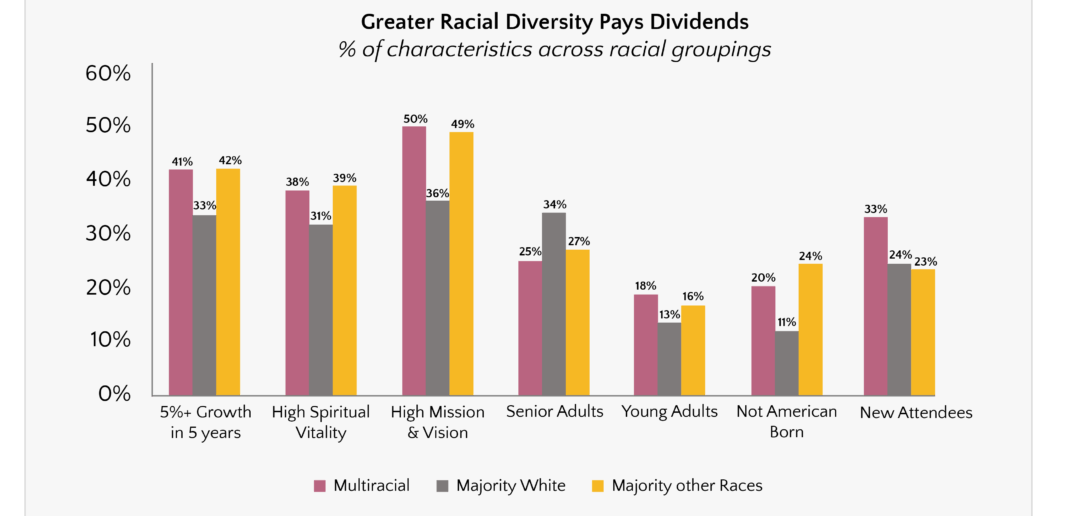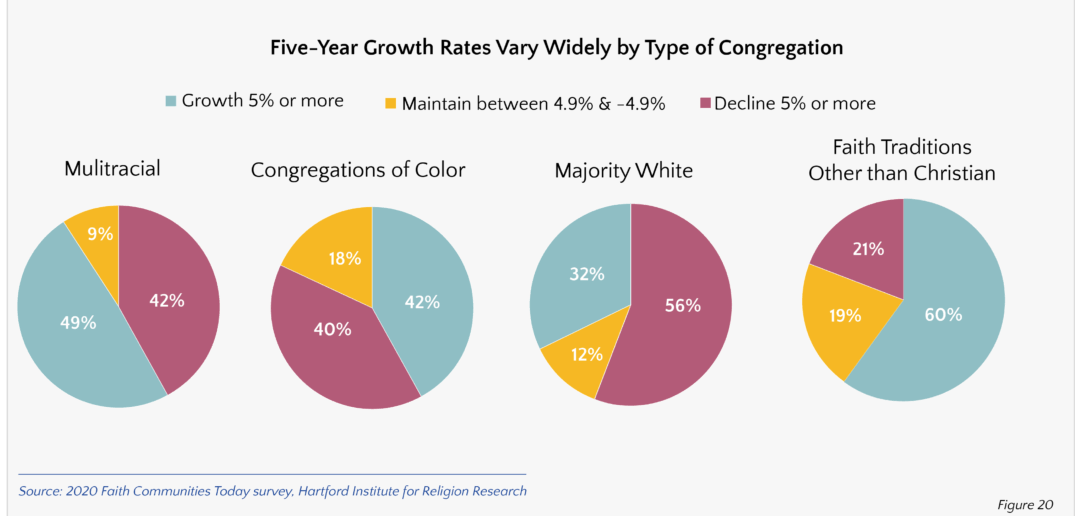One hopeful trend in Faith Communities Today’s 2020 survey findings is that the percentage of multiracial congregations in the U.S. has doubled over the past two decades, from 12% to 25% of all faith communities. The 2020 FACT Survey Report also reveals that congregational diversity correlates to increased growth, spiritual vitality, and a clearer sense of mission and purpose.
Over the past 20 years our society has become ever-increasingly more diverse in a broad range of ways. Not surprisingly these changes are reflected in the nation’s congregations as well. The most apparent in this research is the growth of multiracial congregations. By multiracial, we mean a congregation that has 20% or more of participants who are not part of the dominant racial group in that religious community. The first FACT Survey in 2000 found 12% of faith communities were multiracial, and 20 years later this number has climbed to 25%.
Those congregations who said that striving to be a diverse community described them “very well” were indeed more likely to be multiracial. However, this openness to diversity also manifests itself in communities having a greater percentage of immigrants, a larger percentage of individuals with special needs, fewer lifelong members of their particular faith tradition, and a more diverse age, economic, and educational profile among their participants.
Diversity strengthens religious communities.
Amid a resurgence of Christian Nationalism and the considerable adverse religious reaction to movements asserting racial justice and opposing structural racism, it is essential to point out that the diversity of a religious community actually strengthens it. This diversity correlates to increased growth, spiritual vitality, a clearer sense of mission and purpose, and other attributes of a flourishing community.

Diversity and growth
The percentage of growing multiracial congregations is greater than those in decline and is only surpassed by the growth rate of congregations in religious traditions outside of Christianity.

It is clear that being multiracial and embracing all dimensions of diversity isn’t a panacea to decline. Nevertheless, having a varied faith community that more accurately represents the variety of American society (racially, economically, age-wise, culturally, and with persons of all abilities) enhances vitality and flourishing.
This material is excerpted from Twenty Years of Congregational Change: The 2020 Faith Communities Today Overview. Used by permission.
Related Resources
- What Might the 2020 Census Mean for Churches? by Lovett H. Weems Jr.
- 4 Goals that Promote Healthy Multicultural Ministry by Albert Shuler
- For Multicultural Churches — A Variation on the Golden Rule by Douglas J. Brouwer






